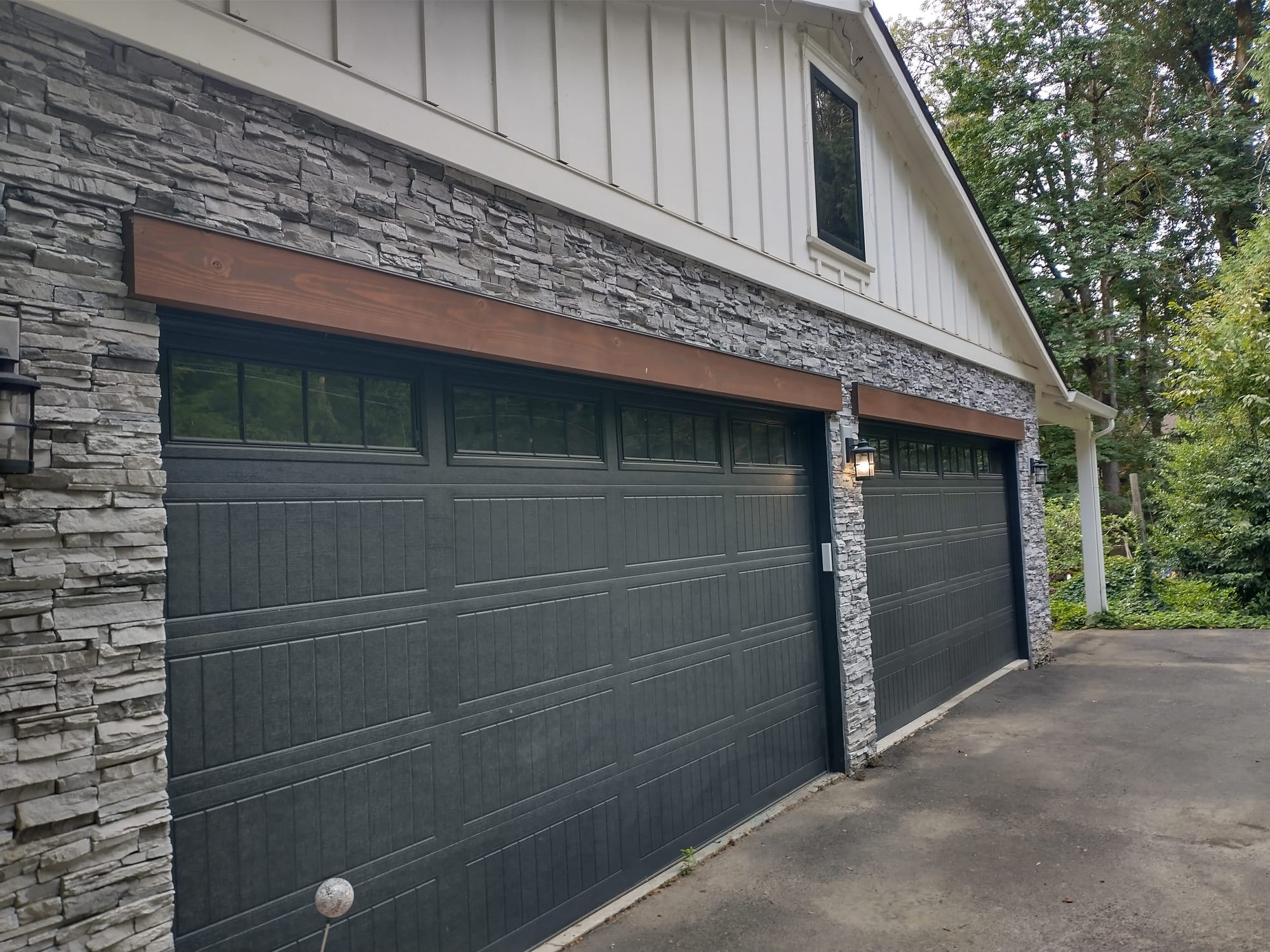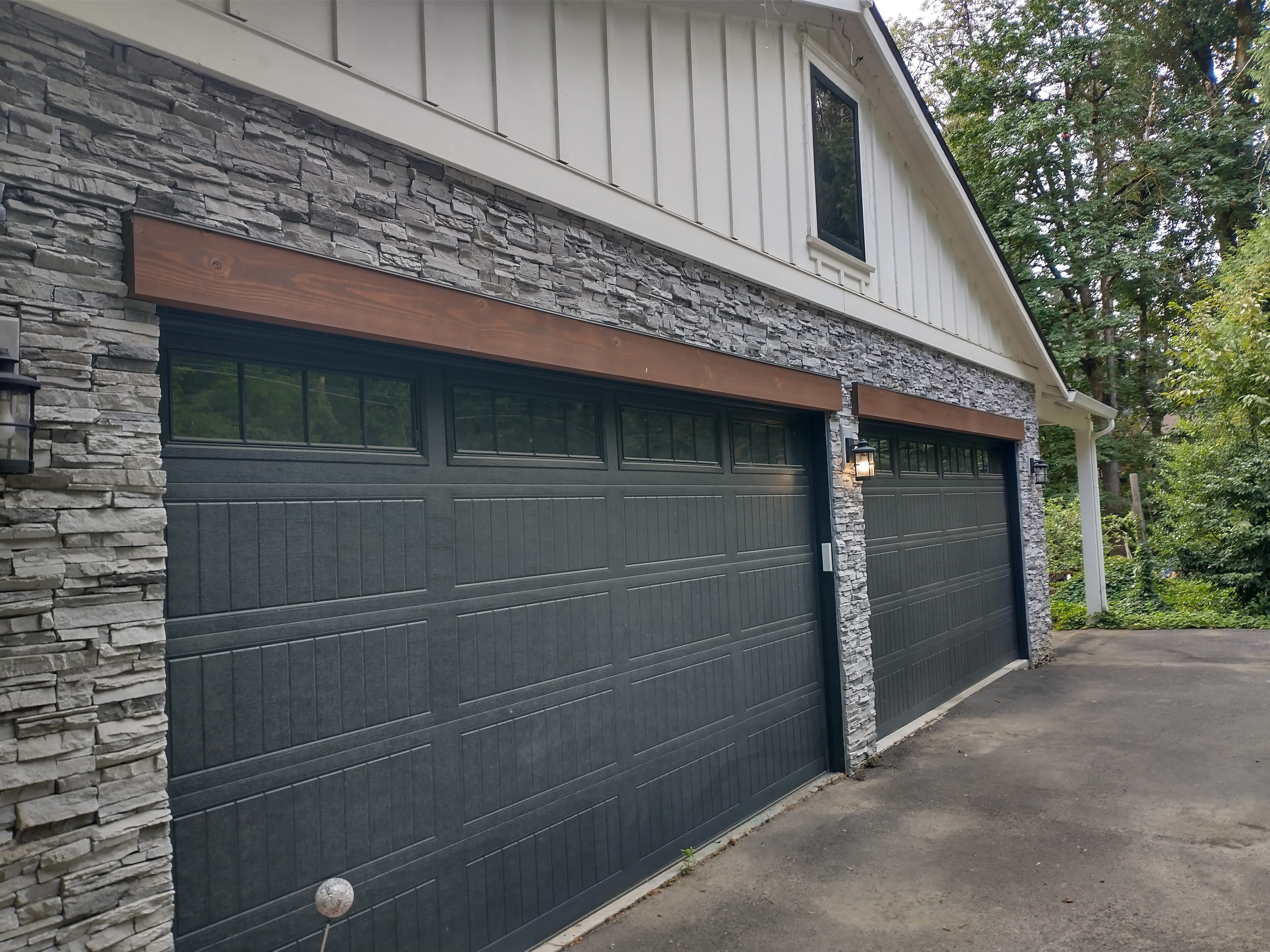How to Paint Your Garage Doors

Key Features:
- Choosing the Right Paint: This section emphasizes the importance of selecting the appropriate type of paint for the garage door, considering factors like latex versus oil-based paints and the different finishes available, each offering varying levels of durability, ease of application, and appearance.
- Color Selection: This part of the guide focuses on how to choose the right color for the garage door to ensure it harmonizes with the house's overall aesthetic. It also discusses the impact of sun exposure on color longevity and how it should influence color choice.
- Preparing the Garage Door: This section details the essential steps for preparing the garage door before painting. It covers cleaning, repairing any damage, sanding, and priming the door to ensure that the paint adheres properly and the finish lasts longer.
Introduction
Painting your garage door is not only about boosting curb appeal—it's also a critical step in protecting it from weather elements like rain, wind, and sun. A well-painted garage door can enhance the overall look of your home and extend the life of the door itself. In this guide, we’ll walk you through the necessary steps and considerations for choosing the right paint and color for your garage door.
Choosing the Right Paint
Selecting the appropriate paint for your garage door is crucial for ensuring it withstands the elements and remains vibrant and protective for years to come:
- Latex vs. Oil-Based: Latex paints are favored for their ease of use and quick drying times. They are less odorous and easier to clean up with soap and water. Oil-based paints, while more challenging in terms of application and cleanup, offer superior durability and resistance to wear and tear.
- Finish Options: The finish of your paint can significantly impact the appearance and longevity of the job. Glossy finishes are durable and easy to clean but will show more imperfections. Semi-gloss finishes offer a balance between gloss and matte, providing some shine without highlighting minor flaws. Matte finishes, while less common for exteriors, can give a modern look but may require more frequent cleaning.
Color Selection
Choosing the right color for your garage door is crucial for achieving aesthetic harmony with your home’s exterior:
- Visual Harmony: Look at the elements of your home's exterior, such as siding, windows, and roofing, to choose a color that complements these features. A well-chosen color can create a cohesive appearance.
- Sun Exposure: Consider the orientation of your garage door. Doors facing south or west might experience more intense sunlight, which can lead to faster fading. Opt for lighter colors or specially formulated paints that resist UV damage to combat this issue.
Preparing the Garage Door
Proper preparation of your garage door is essential to achieve a professional-looking paint job that will last for years. Here's how to ensure the surface is ready for painting:
- Cleaning: Start by cleaning the garage door thoroughly to remove any dirt, grime, and grease. Use a mild soap and water solution or a dedicated cleaner to ensure the surface is spotless. For metal doors, consider using a degreaser if there are oily spots.
- Repairing: Inspect the door for any damage such as dents, rust, or peeling paint. Use a putty knife to apply filler to dents, allow it to dry, then sand smooth. Treat any rust spots by sanding them down or using a rust-neutralizing product.
- Sanding and Priming: Sand the door lightly to scuff the surface and improve paint adhesion. Wipe down the door to remove sanding dust. Apply a primer designed for the door’s material (metal or wood) to enhance paint adhesion and to ensure a uniform paint finish. Priming is especially important if you are changing the color of the door or if you have repaired any damaged areas.
Painting Techniques
Once your garage door is prepped, follow these steps for painting to get the best results:
- Tools Required:
- Brushes: Good for detailed areas around windows or panels.
- Rollers: Ideal for smooth, fast coverage on flat sections.
- Sprayers: Best for achieving an even coat over large, flat areas, although they require more setup and cleanup time.
- Application Tips:
- Start by painting the edges and any deep features first using a brush.
- Use a roller or sprayer to cover the flat panels, applying paint in thin, even layers.
- Overlap each pass slightly to avoid lines or streaks.
- Apply at least two coats for best coverage and color richness, allowing the paint to dry completely between coats.
- Be mindful of the weather; avoid painting on extremely hot days or under direct sunlight, and avoid windy or dusty conditions to prevent imperfections.
In Our Experience:
"Your can really switch things up and put a little personality in your garage doors. you can paint it with the body and make them blend in. You can paint the doors with the body and then trim it out to accent the area. Your can paint them the trim color with the trim to make them pop. You can paint them to match your front door or an accent color used elsewhere. the options are plentiful"
Drying and Re-coating
Effective drying and proper re-coating are crucial to ensure your garage door's new paint job is both attractive and durable. Here are some guidelines to follow:
- Timing:
- Paint drying times can vary based on the type of paint used, weather conditions, and the door's material. Latex paints typically dry faster than oil-based options, often becoming touch-dry within a few hours.
- Ideal painting conditions are on a dry, overcast day with temperatures between 50-75°F (10-24°C). High humidity and extreme temperatures can affect drying times and paint adhesion.
- Wait for the manufacturer’s recommended time before applying a second coat. This is usually between 4 to 24 hours, depending on the paint type and environmental conditions.
- Assessment:
- After the first coat has dried, assess the coverage. Look for any thin spots or areas where the old color shows through.
- A second coat is often necessary to achieve full color depth and uniform finish. Lightly touch the surface to ensure it is completely dry before re-coating to avoid smudging or sticking.
Maintenance Tips
Maintaining your freshly painted garage door will enhance its longevity and keep it looking its best. Here are some maintenance tips:
- Regular Cleaning:
- Periodically clean the door with a soft cloth or sponge and a mild detergent solution to remove dirt and grime that can wear down the paint over time.
- Rinse thoroughly with a hose, especially in areas with high salt or pollution exposure, to prevent degradation of the paint finish.
- Touch-ups:
- Inspect the door annually for any chips, scratches, or other damage. Address these areas promptly to prevent rust, especially on metal doors.
- Keep some of the original paint stored in a cool, dry place for easy touch-ups. Make sure to thoroughly mix the paint before use.
- Apply touch-ups with a small brush for precision and blend them into the surrounding area to maintain a seamless look.
Common Mistakes to Avoid
When painting a garage door, several common pitfalls can compromise the quality and durability of the finish. Here are key mistakes to avoid:
- Ignoring Weather Conditions:
- Paint reacts significantly to temperature and humidity. Painting in conditions that are too hot, cold, or humid can prevent the paint from curing properly. Avoid painting in direct sunlight or when rain is expected.
- Ideal painting temperatures are between 50-75°F (10-24°C). High humidity can extend drying times and affect how the paint adheres to the surface.
- Skipping Prep Work:
- Failing to properly prepare the surface can lead to peeling, bubbling, or uneven paint application. It’s crucial to clean, sand, and prime the door, especially if rust or old paint needs to be removed.
- Ensure that any dents or surface irregularities are filled and smoothed out to prevent visible imperfections after painting.
Conclusion
Painting your garage door can significantly enhance the curb appeal and protective capabilities of your home. This project not only refreshes the look of your home but also serves as a protective measure against weather and wear.
- Final Tips:
- Always use paints and primers suited for exterior use and compatible with your garage door material.
- Consider the longevity and performance of the paint, not just the aesthetic appeal.
- If you’re uncertain about tackling this project alone or achieving professional results, hiring a skilled professional might be worth the investment.
Action
Ready to transform your garage door? Gather your supplies at a local hardware store, or for expert advice and flawless results, consider consulting with a professional painter. Start planning today to give your garage door a durable and attractive finish that will last for years!
-
People Also Ask:
What are the benefits of using latex paint over oil-based paint for garage doors?
Latex paint is favored for garage doors due to its ease of use and quick drying times. It emits less odor and can be cleaned up easily with soap and water, making it a convenient choice for DIY projects. Although oil-based paints offer superior durability and resistance to wear, latex paints are generally sufficient for garage doors and are easier to handle for most homeowners.
How does the finish of the paint affect the maintenance and appearance of a garage door?
The finish of the paint significantly impacts both the appearance and maintenance of a garage door. Glossy finishes are durable and easy to clean but may show more imperfections, making them suitable for doors that are in good condition. Semi-gloss finishes provide a balance, offering some shine without highlighting minor flaws, while matte finishes offer a modern look but might require more frequent cleaning due to their tendency to show dirt and fingerprints more easily.
What are the recommended conditions and temperatures for painting a garage door to ensure the best results?
The best conditions for painting a garage door are on a dry, overcast day with temperatures ranging between 50-75°F (10-24°C). It’s important to avoid painting in direct sunlight, extreme temperatures, or when rain is expected, as these conditions can affect the drying times and adhesion of the paint. High humidity can also extend drying times and should be considered when planning the painting project.
-
SUBSCRIBE TO OUR BLOG: Stay informed with the latest in Painting and DIY projects by subscribing to Lightmen Painting. Get insights, tips, and more delivered straight to your inbox. We would also love to know what you would like to read about, leave thoughts on where we should go next. Interests, Topics, Ideas, all are welcome.
"Restoring history is like conversing with time; each layer uncovered tells a richer story."
Answer: Restored historical paint layer
If your in the Portland, Or. area and need advice or a free no obligation estimate call us at 503-389-5758 or email scheduling@lightmenpainting.com
Shout Out:
Celebrating JLC Online Forums
If you're dealing with peeling stucco and need advice, JLC Online Forums offers expert solutions for common exterior problems. At Lightmen Painting, we value the technical knowledge shared in these discussions, ensuring that every project is handled with expertise and care.
Thanks for stopping by Lightmen Daily! Stay tuned for more practical tips and expert advice on making your painting projects flawless, from wall to floor!
Lightmen Painting Serving: Portland, Tigard, Lake Oswego, Tualatin, West Linn, Milwaukie, Sherwood, Happy Valley, Oregon City, Beaverton, Hillsboro, Gresham


